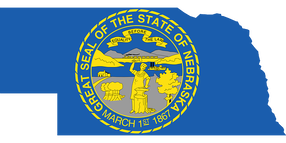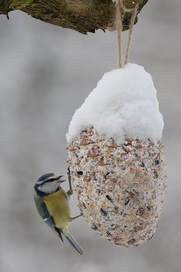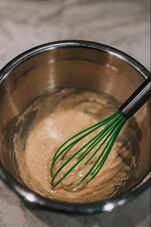
A lot of things happen in April. Maybe someone played a joke on you on the 1st because of April Fool's Day. National Deep Dish Pizza Day is April 5th, and the 9th is National Unicorn Day! Sadly, April 15th is Tax Day, but did you know that the 28th is Blueberry Pie Day? 
Perhaps because its springtime, April is also a month to commemorate nature and wildlife. April 14th is National Gardening Day and April 23rd is National Picnic Day! The 22nd is Earth Day; The 26th is Audubon Day; and the 29th is National Arbor Day. All in all, its a great month to bring an appreciation into the classroom. The Earth
By the early 1960s, Americans were becoming aware of the effects of pollution on the environment. Rachel Carson’s 1962 bestseller Silent Spring pointed out the dangerous effects of pesticides on the American countryside. Later, a 1969 fire on Cleveland’s Cuyahoga River shed light on the problem of chemical waste disposal. 
Until then, protecting the planet’s natural resources was not part of the national political agenda. Factories pumped pollutants into the air, lakes, and rivers with few legal consequences. Gas-guzzling cars were considered a sign of prosperity and few Americans recycled.

US Senator Gaylord Nelson developed the idea for Earth Day after being inspired by the anti-Vietnam War “teach-ins” that were taking place on college campuses around the United States. Denis Hayes, an activist from Stanford University, became Earth Day’s national coordinator. 
The first Earth Day was April 22, 1970. It was effective at raising awareness about environmental issues and transforming public attitudes. During the 1970s, several important pieces of environmental legislation were passed. Among them were the Clean Air Act, the Water Quality Improvement Act, the Endangered Species Act, the Toxic Substances Control Act and the Surface Mining Control and Reclamation Act. Another key development was the establishment of the Environmental Protection Agency, which was tasked with safeguarding the natural environment—air, water, and land.
Birds
National Audubon Day marks the birth of John James Audubon, an ornithologist, naturalist, and painter who was well-known for his extensive studies on American birds and their habitats. Audubon’s greatest work, “The Birds of America,” is now widely considered as one of the most noteworthy examples of wildlife illustration. It set the tone for future wildlife illustration. Even today, artists are measured against this book’s standards. 
After his death, the National Audubon Society was created in John Audubon’s memory. The society promotes and protects the habitats that support the world’s birds and sponsors National Audubon Day. Located in the United States, this society is one of the oldest such organizations in the world. Today, there are many branches of the National Audubon Society all over the U.S., connecting John Audubon’s name to bird conservation forever. Trees
Pioneers moving into the Nebraska Territory in the 1800s noted that it was largely a treeless prairie region. The new residents needed trees as windbreaks to keep soil in place, for fuel and building materials, and for shade from the hot sun.

Nebraska newspaper editor J. Sterling Morton had an enthusiasm for trees and advocated strongly for individuals and civic groups to plant them. Once he became secretary of the Nebraska Territory, he further spread his message of the value of trees. He proposed a tree planting holiday called “Arbor Day”. Prizes were offered for the largest number of properly planted trees on that day. It was estimated that more than 1 million trees were planted in Nebraska on the first Arbor Day.

By 1885, Arbor Day became a legal holiday in Nebraska. Many other states also passed legislation to observe Arbor Day yearly. Today Arbor Day is celebrated in all 50 states. The Arbor Day Foundation was created in 1972. Its mission is to inspire people to plant, nurture, and celebrate trees. Celebrate Nature
Making birdseed feeders is a great way to help birds in your area. They add natural ornamentation and are practical in that they contribute to the food web. Plus, they’re fun to make! To Commemorate Audubon Day, Arbor Day, Earth Day, Spring, or….just because….spread the joy by making these feeders for our Fine Feathered Friends! Make classroom Birdseed Feeders 
Multiply this recipe as necessary for all the students in your class. To make 6-7 (2 1/2 - 3 1/2 inch) cookie cutter feeders you will need a bowl, ¾ cup flour, 3 tablespoons corn syrup, a nonstick saucepan, an unflavored gelatin packet, a skewer or chopstick, large needle, 4 cups birdseed, nonstick cooking spray, spoon, ½ cup water, string/yarn/ribbon, and cookie cutters!
CHECK OUT MY TIKTOK VIDEO DEMONSTRATION BELOW, AND THEN READ ON FOR MORE DETAILS!

Before you start making the feeders, spray a flat surface (plate or cutting board) and the cookie cutters with non-stick spray. Then, to make the feeders, bring water and corn syrup to a boil. Reduce the heat and add the gelatin, continuously whisking to dissolve the powder. 
Next, transfer this mixture to the mixing bowl and add flour, stirring the mixture until well blended. (Spray the mixing spoon with non-stick spray.) Add additional hot water or flour, 1 tablespoon at a time, if it is either too thin, or too thick, respectively. The consistency should be like cake batter. 
Once the consistency is right, add the birdseed and mix it so that the seeds are thoroughly coated. This will be a thick, stiff mixture. Fill each cookie cutter to the brim with the birdseed mix. Press it into every corner of the mold as firmly as possible. Keep a water bowl nearby for dunking your fingers, as the birdseed will stick to them. Use a skewer/chopstick to create the holes for hanging each ornament. Place the holes approximately 1 inch away from the ornament's edge.
Allow the bird feeders to dry on a flat surface (sprayed with non-stick spray) for 24 hours. Once dry, remove them from the cookie cutters and thread a string or ribbon through the holes in each and tie a tight knot, leaving a loop for hanging.
For an organized write-up of this lesson, plus additional activities, click here.
0 Comments
Leave a Reply. |
AuthorGertrude Katz has spent over 30 years teaching K-12 public school students all major subjects. She has taught biology and education at the college level. The majority of her career has been spent instructing biology at the secondary level. Categories
All
|
 RSS Feed
RSS Feed